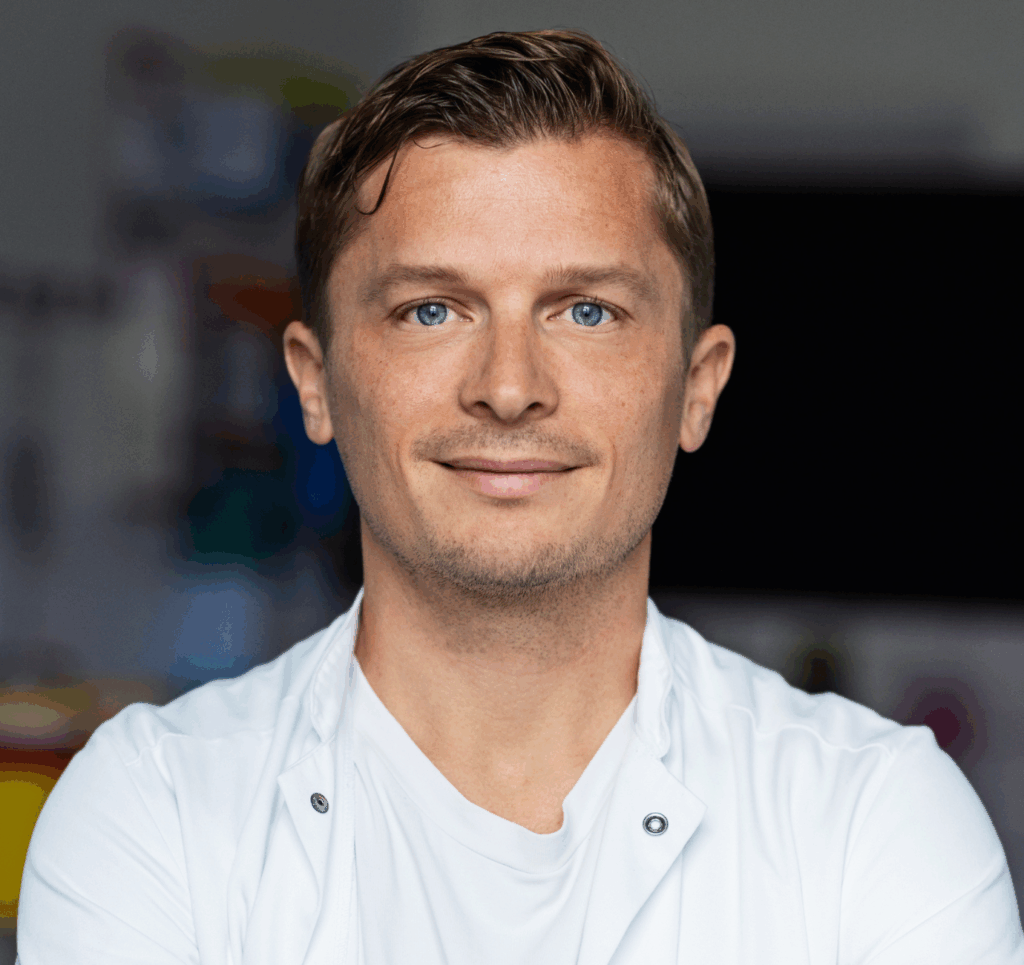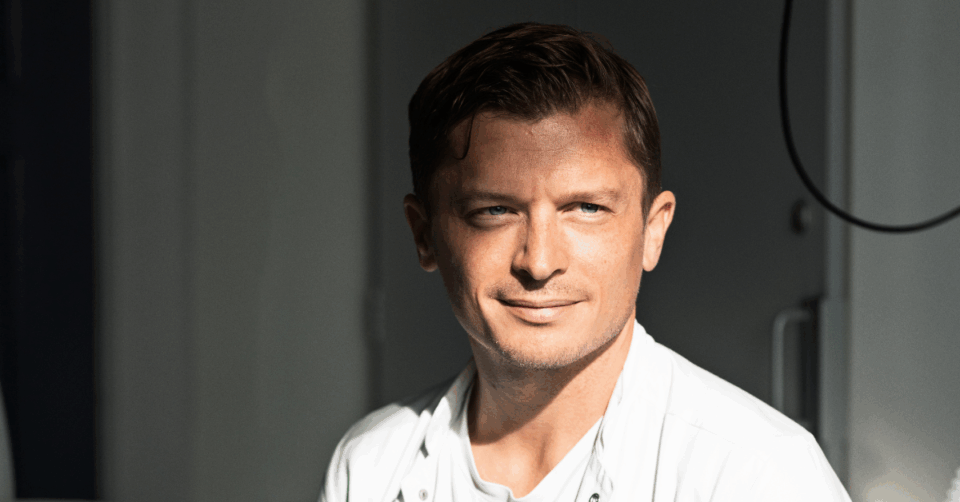18 November 2025
For his project as a LEO Foundation Dr Abildgaard Fellow, dermatologist Hans Christian Ring, investigates hidradenitis suppurativa (HS). The project aims to achieve a better understanding of a disease that can be difficult to speak up about. It may lead to a new topical treatment regimen.
It is not unusual that patients with hidradenitis suppurativa (HS) have the disease for up to eight years, before they are diagnosed. One reason might be that the chronic condition is hard to talk about for patients, notes Hans Christian Ring, Senior Registrar at Department of Dermatology, Zealand University Hospital, Roskilde. HS creates discomfort linked to sore nodules and pus in areas such as the groin and armpits.
“It is not the easiest topic, because it often affects intimate parts of the body. Another aspect that has made the conversation challenging is the other side of it: doctors may not recognize the disease,” says Ring.
Not long ago HS was commonly considered a disease associated with an infectious origin. Today the development of HS remains enigmatic, but it is understood as a combination of an unusual immune system response and an imbalance of the skin’s microorganisms. The majority of patients are between 20 and 30 years old when diagnosed.
“We cannot treat a skin disease properly, before we have the right language for it. While we know that bacteria and the immune system may be involved in the disease development, we are unsure if one of them triggers it more than the other,” Hans Christian Ring says.
Looking closer at the bacteria
Ring’s project as a Dr Abildgaard Fellow investigates the bacteria’s role. An important partner is The Costerton Biofilm Center at the University of Copenhagen. They are experts at looking at bacteria. He also relies on the participation of 200 HS patients during a five-year period. He is in contact with them daily as a Senior Registrar, when they receive treatment at Zealand University Hospital’s Department of Dermatology.
“In general HS patients are very motivated to participate in research projects, because they know how limited treatment options we have. They want to strengthen the treatment and reduce the burden for others. Since we see the disease might be passed on, patients can also be motivated by improving the outlook for their children.”
During the project the patients will be divided into two groups. One group will receive an antibiotic treatment (Doxycycline), the other a biologic therapy (Adalimumab). Ring and his team will study how the bacteria on patients’ skin responds to both treatment regimens. At this point neither the antibiotic nor the biological treatment options are ideal. The first comes with clear side effects: nausea, dizziness, and the risk of making the body resistant to antibiotics. The biological treatment seems to wear off over time, indicated by patients dropping it after six to nine months.
“It is safe to say that both treatment strategies can be improved,” he says.
Any outcome is the prework for others
After understanding how the skin responds to treatment, Ring and his team will test what happens, if the bacterial environment of the skin changes. For the second half of the study, patients apply the bacteria Cutibacterium species to the areas with irregular activity. An increase of Cutibacterium acnes might be helpful. It is known that there is a lack of it on the skin of HS patients compared to healthy skin. This observation has been demonstrated by several microbiome studies. Ring’s constructive bacteria approach is comparable to how a supplement of certain types of bacteria can regulate an imbalance in the gut.
“We strongly assume the bacteria plays a role. We of course hope that the application of a bacteria-based treatment – probiotics – will create a visible improvement. If it does not, the work is not wasted. Then we have indicated that we should focus on the immune system rather than the bacteria going forward,” Ring says.
For him, research is not just about verifying a hypothesis. There is a satisfaction in contributing to the shared literature in any case.
“That is how you can affect something outside the walls of the hospital, where you work. It is at the hospital you might have seen something that started the research and you questioned it. But the hours devoted to answering it only makes sense, when it moves beyond the exchange with your closest colleagues and becomes findings that are available to everyone.”
Hans Christian Ring, MD, PhD
Clinical Associate Professor, University of Copenhagen
Senior Registrar, Department of Dermatology, Zealand University Hospital, Roskilde
Project title: “The Unraveling of the Cutaneous Microbiome in the Pathogenesis of Hidradenitis Suppurativa: A Potential Treatment Option”
What it covers: A study of the functionality and distribution of the skin bacteria in hidradenitis suppurativa (HS) and its dynamics during treatment using advanced molecular methods. The final goal is to develop and test a topical probiotic treatment based on bacteria from healthy skin.
Best advice for a young researcher: “Let your research come from a genuine curiosity in clinical problems. Another advice is to explore a research field that is not well-covered already.”
On receiving the LEO Foundation Dr Abildgaard Fellowship: “It is a rare opportunity for me to contribute to the understanding of HS and the development of efficient treatment for patients.”

